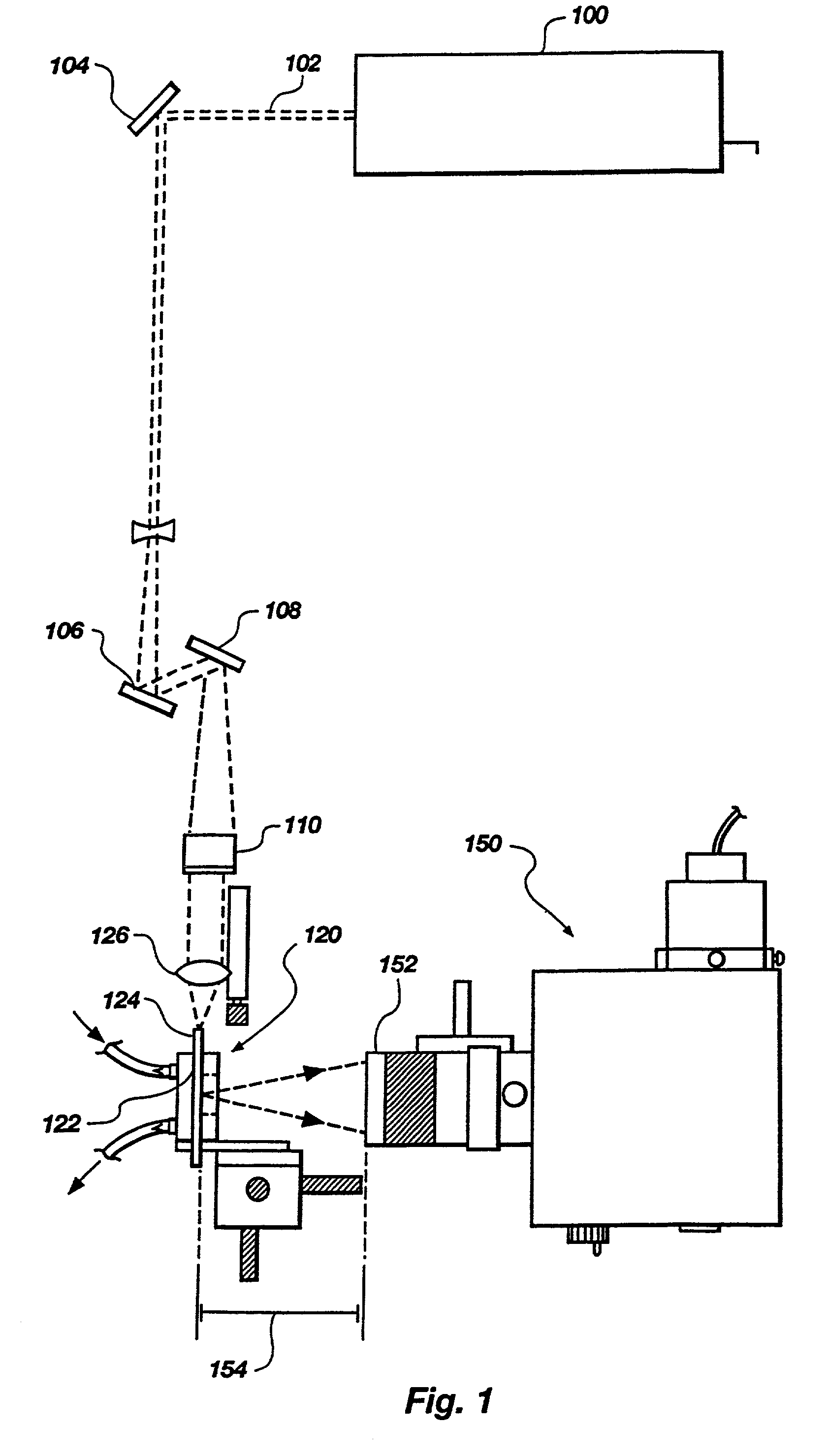Waveguide immunosensor with coating chemistry and providing enhanced sensitivity
a waveguide immunosensor and coating technology, applied in the field of samples analysis, can solve the problems of difficult to build a multi-well biosensor, difficult to achieve multi-well biosensor, and ineffective internal reflection of typical rod-shaped waveguides, and achieve the effect of increasing the intensity of the evanescent field
- Summary
- Abstract
- Description
- Claims
- Application Information
AI Technical Summary
Benefits of technology
Problems solved by technology
Method used
Image
Examples
example i
Preparation of Waveguide Surface—Hydrogel
[0071]A silica surface was prepared with a hydrogel coating comprised of polymethacryloyl hydrazide (abbreviated “PMahy”). Fused silica slides of CO grade and thickness about 1 mm, available from ESCO, Inc., were suitable as waveguides (optical substrates).
[0072]To graft the PMahy to the silica, the surface was derivatized with aldehyde groups. The derivatization was accomplished by silanization with 3-aminopropyltriethoxy silane (abbreviated “APS”) to add an amino functional group, followed by reaction with glutaraldehyde to produce free aldehyde groups. The PMahy was then reacted with these aldehyde groups to form the hydrogel coating.
[0073]Antibodies could be coupled to this hydrogel in at least two ways. In one method, the carbohydrate groups in the Fc antibody region are oxidized to aldehydes by treatment with sodium metaperiodate. However, few antigen-binding fragments contain carbohydrate moieties useful for this purpose. Thus, a prefe...
example ii
Preparation of Waveguide Surface—Avidin-biotin
[0082]This strategy was designed to exploit the very strong binding affinity of biotin for avidin (binding constant of around 10−15). An avidin coating was readily made by physical adsorption on a silica surface. The Fab′ fragments were then conjugated with biotin to form biotin-Fab′ conjugates, also referred to as biotinylated Fab′ fragments or b-Fab′ fragments. The biotin is coupled at specific location(s) on the Fab′ fragments. The avidin coated surface is then treated with the b-Fab′ fragments, so that the biotin binds to the avidin thereby immobilizing the Fab′ fragment to the surface in a site-specific manner.
[0083]In actual experiments, the procedure was as follows. Chromic acid-cleaned silica surfaces were immersed in a solution of 3×10−6 M (molar) avidin for about 3 hours at room temperature. The surfaces were then washed several times in PBS to remove unadsorbed avidin.
[0084]Biotinylated Fab′ conjugates were prepared from a sol...
example iii
Preparation of Waveguide Surface—Peg-type
[0087]In this method, the terminal hydroxyl groups of polyethylene glycol (abbreviated PEG) were converted to primary amine or hydrazide groups by reaction with ethylenediamine (abbreviated ED) or hydrazine, respectively. The PEG molecules so modified were then coupled to APS-glutaraldehyde activated silica surfaces.
[0088]Monofunctional (PEG M2000, M5000) or difunctional (PEG 3400, PEG 8000, PEG 18,500) of the indicated molecular weights in daltons, were reacted with p-nitrophenyl chloroformate (abbreviated p-NPC; obtained from Aldrich Chemicals) in solution in benzene. The mixture was agitated at room temperature for about 24 hours. Dry ethyl ether (less than 0.01% water, purchased from J.T. Baker Chemicals) was used to precipitate PEG-(o-NP)2 from solution. The precipitate was vacuum-dried overnight. Between about 50% and about 100% of PEG molecules were converted by this treatment to PEG-Onp, as determined by hydrolysis with 0.1N sodium hy...
PUM
| Property | Measurement | Unit |
|---|---|---|
| wavelengths | aaaaa | aaaaa |
| wavelengths | aaaaa | aaaaa |
| wavelengths | aaaaa | aaaaa |
Abstract
Description
Claims
Application Information
 Login to View More
Login to View More - R&D
- Intellectual Property
- Life Sciences
- Materials
- Tech Scout
- Unparalleled Data Quality
- Higher Quality Content
- 60% Fewer Hallucinations
Browse by: Latest US Patents, China's latest patents, Technical Efficacy Thesaurus, Application Domain, Technology Topic, Popular Technical Reports.
© 2025 PatSnap. All rights reserved.Legal|Privacy policy|Modern Slavery Act Transparency Statement|Sitemap|About US| Contact US: help@patsnap.com



